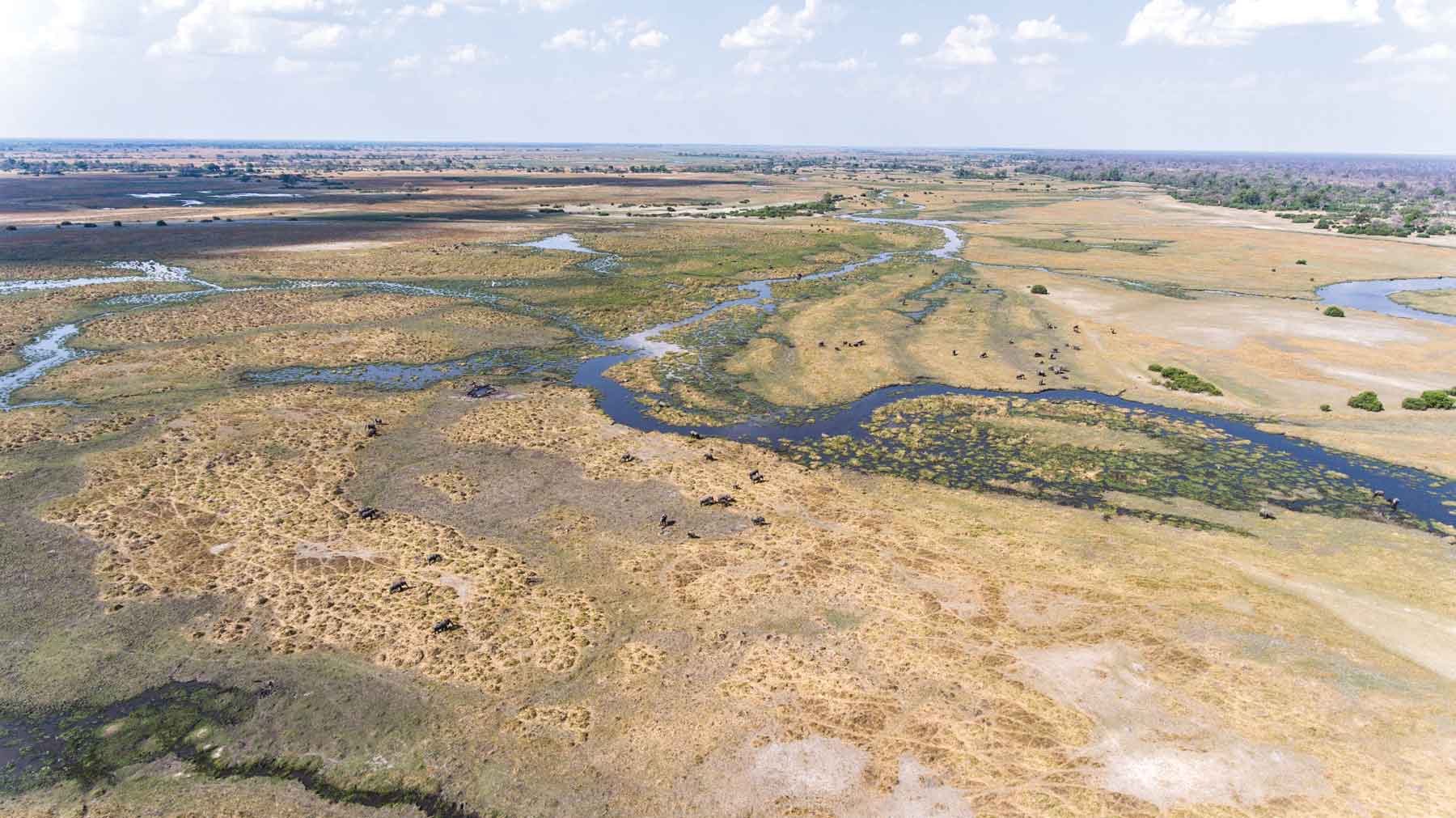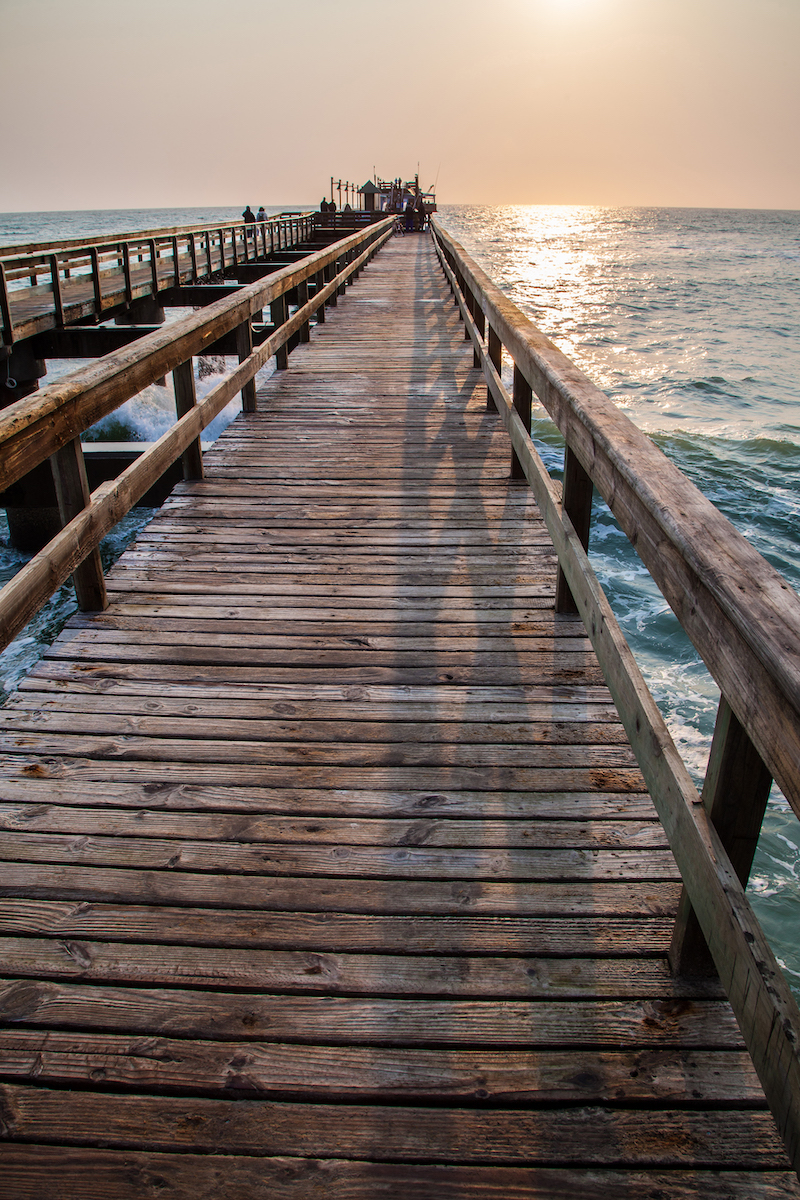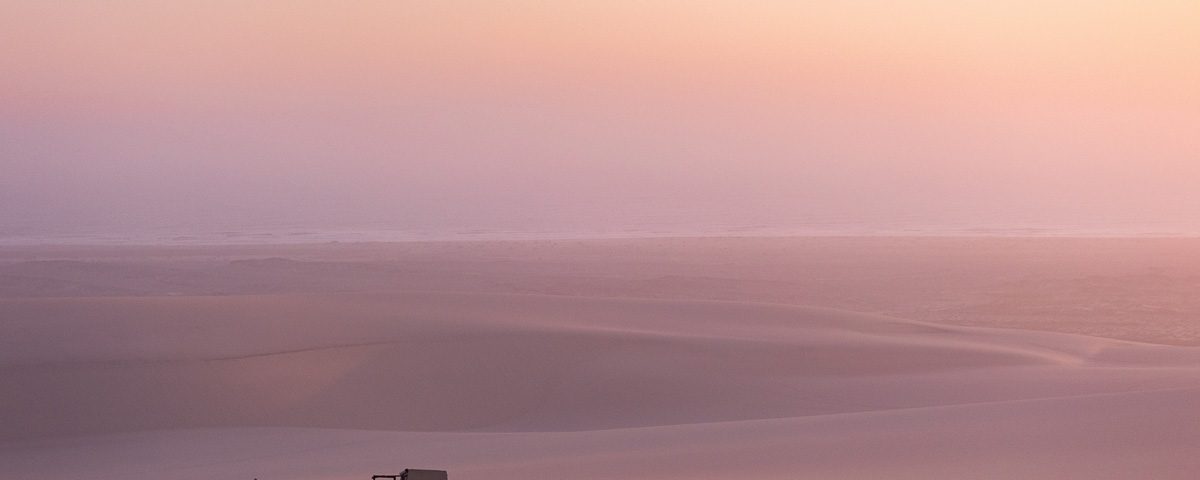
It’s time to explore the Zambezi
July 1, 2021
Shop, eat, do at the Coast
October 26, 2021One day the sun is bright, the wind a gentle breeze. The next is shrouded in fog and an eerie mystical ambiance. A pristine white beach stretches along the rumbling and rolling waters of the tumultuous Atlantic Ocean. The soft sandy slip faces of undulating dunes are an extreme juxtaposition to the rugged rock faces that border a dry river. Like monoliths that stand guard. An arid hinterland. Yet everywhere you look there is life. So many contrasts in a single paragraph. But that’s what this place, here at the edge of human existence, is made of. A dichotomy of harsh and soft. Of bright and mysterious. Of desolation and vibrant life. An ancient land largely uninterrupted by the visible influences left behind by humans, all but for the hundreds of crafts that dot the shores and desertscapes. Remnants of a bygone era where this turbulent coastline was the bane of seafarer existence and the last port of call for many an unlucky adventurer. That is Namibia’s Skeleton Coast.
I have travelled across most of this incredible country and have been lucky enough to visit the spectacular Skeleton Coast National Park on more than one occasion, but this was the first time I was able to make a family holiday of it. With my husband, mom and dad in tow, we set off to explore the pristine beauty of the park with a visit to Shipwreck Lodge. There are few places in the world that offer a more anti-COVID environment than Namibia, with its wide open spaces and its natural inclination towards social distancing by default. In fact, there is no place on this earth where I have felt more socially distant than in the Namib Desert, especially the northern stretch that forms part of Skeleton Coast National Park. Standing on the front deck of Shipwreck’s main cabin, I realise that besides the small contingent of travellers at the lodge, there is not another soul around for close to 100 km. With all this space, one can finally let go… and breathe.
Tales of infamy
For centuries the Skeleton Coast has been shrouded in infamy. History books tell of great adventurers that sailed the seas in search of new worlds. Many made the voyage along the western rim of Africa, en route to destinations far east, but here, along the south-western parts of the continent, many met their doom. Namibia’s coastline stretches for more than 1,500 km from the Orange River in the south to the Kunene River in the north. Along these tumultuous shores are strewn what is estimated to be over 1,000 wrecks of ships and crafts that never reached those new worlds. The northern section of the country’s coastline and the desert landscapes inland make up Skeleton Coast National Park. From the Ugab River northward to the Kunene River, and some 70 km inland in certain places, this conservation area protects some of the most pristine and untouched desert and arid landscapes in the world. The wilderness within is home to a surprising abundance of life. Wildlife and flora adapted to the harsh climes can be found in the valleys and along the ephemeral rivers of the region. The area is largely untouched by destructive humankind, yet there is proof that man has ventured, whether on purpose or not, into this wilderness. One of the park’s most captivating features is the collection of wrecked crafts dotted along its beaches as well as the countless animal, and even some human, skeletons found in the sands. Bleached a stark white by the elements, they are the namesakes of the park. The remains of vessels are more unassuming than what you may think when the term “shipwreck” comes to mind. The rocky shores and years of being pounded by the turbulent ocean waters have whittled them down to small segments and fragments of wood or metal – wisps of memories that allow history to live on. Stories of these ill-fated vessels have become a part of the area’s infamy. They stand sentinel along these lonely shores, warning others of the dangers of the treacherous, but beguiling Skeleton Coast.
A Haven and Hearth
“Completely unpredictable.” That’s the phrase my mother uses as we explore the assortment of paraphernalia on shelves and side tables and the cosy corners that make up the interior design of Shipwreck Lodge. She must have been expecting a typical Namibian lodge like so many others we have visited before. But this is not your grandfather’s safari camp. It’s stylised and eclectic yet somehow feels like home. Warm and cosy fireside lounge seats draped in luxurious textures for the misty days spent indoors with a good book and a glass of Merlot. Bright and happy light filtering through the oddly slanted windows, and deck chairs that beckon when the weather outside is gorgeous and the gin and tonics call almost as loudly as the incredible view spread out in front of the lodge. A contrast. Always. Shipwreck Lodge, with its ten cabins perched along a duneside, faces northwest and has views of both the Atlantic coastline and the ephemeral Hoarusib River. The cabins, as well as the main area, were designed to mimic the lodge’s eponymous stranded crafts. Keep your sea-legs ready as the inside of each cabin, portholes and all, will make you feel as if you are indeed on a vintage wooden vessel heading to a far-off land of adventure and new discoveries. The staff, who hail from villages in the Sesfontein and Purros conservancies, are always at the helm, ready with a smile and a beverage, or a wonderfully entertaining anecdote of what life is like in this far-flung corner of one of the world’s last untouched hinterlands.
A Poetry of extremes
We depart on an early morning nature drive with our guide Rocky to explore the Hoarusib River. An ephemeral river, meaning it only carries surface water during certain wet times of year, the Hoarusib is home to a plethora of life. Tell-tale signs of springbok and gemsbok precede the actual sighting, and though we missed them on this particular trip, I have in the past been privy to exceptional experiences with the famous desert-dwelling elephants and lions in this iconic river’s environment. It is well known that Namibia is a geologist’s ultimate playground, and Rocky is excited about all things volcanic and sedimentary. Enthralling ancient rock formations are clearly exposed in many areas along the river course, making it easy to marvel at these natural wonders. The Hoarusib Valley is home to some of the oldest geological formations in Namibia. The towering rock walls we see along the river on our excursion are up to 2,600 million years old. The geological highlight of this drive is most certainly the Clay Castles, fine-grained clay deposits which have been shaped by erosion over the years. They are structurally fascinating and the view from the top, after a short climb, is otherworldly. The scene is reminiscent of the iconic image of Petra in Jordan. Yet here, in the furthest reaches of the Namibian wilderness, you won’t find Petra’s crowds. We take a moment atop this monument of clay, once again a striking contrast to the soft dunes sloping nearby, to absorb the poetry of texture, shadow and hues all around.
Getting there
The journey to this desolate retreat is most certainly part of the adventure. Whether by land or air (no longer by sea!), the vast and contrasting dramatic landscapes of the park will enrapture you. Self-driving from Windhoek can take up to 9 hours, so, though the trip is very beautiful, it might be more practical to fly to Möwe Bay with a charter or scenic flight company, especially if you are strapped for time. From the pick-up point at Möwe Bay, the journey of one-and-a-half hours over dunes and along the shoreline will further entrench the notion that you are heading into a remote and secluded retreat.
Visit www.shipwrecklodge.com.na to book your adventure.
As the sun slowly dips toward the horizon, we explore the dunes from an even closer range. Over and alongside these majestic mountains of sand we glide on quad-bikes. Freedom like no other. The wind whizzing past as you see and feel the desert all around. Completely immersed in it. The soft pink hues of dusk and the dramatic red of the sun as it sinks into the Atlantic is the perfect crescendo to the symphony of a day spent breathing in nature, space, tranquility and freedom. We take only photographs and leave only footprints behind. The wind will have swept away the evidence of our adventure by dawn. The sun’s descent seems to slow down. Time has more languid dimensions in this place. Or perhaps that is just wishful thinking on our part. We never want this sunset to end… TNN
It takes a Community
Shipwreck Lodge, which was built in a joint venture partnership with the Sesfontein and Purros conservancies, forms part of Namibia’s very successful Community Based Natural Resource Management (CBNRM) programme. The CBNRM programme, which came into effect shortly after independence, gives rural Namibians rights over their natural resources. Communities establish what is known as conservancies and manage their natural resources, including land. They are enabled to derive economic benefits for their members through tourism, conservation hunting and other activities and many have gone into joint venture partnerships with private companies to achieve these goals. The staff at Shipwreck Lodge are predominantly from villages within these conservancies, they know and understand the region well and have a vested interest in the success of tourism as a staple of their, and their communities’, livelihoods.


